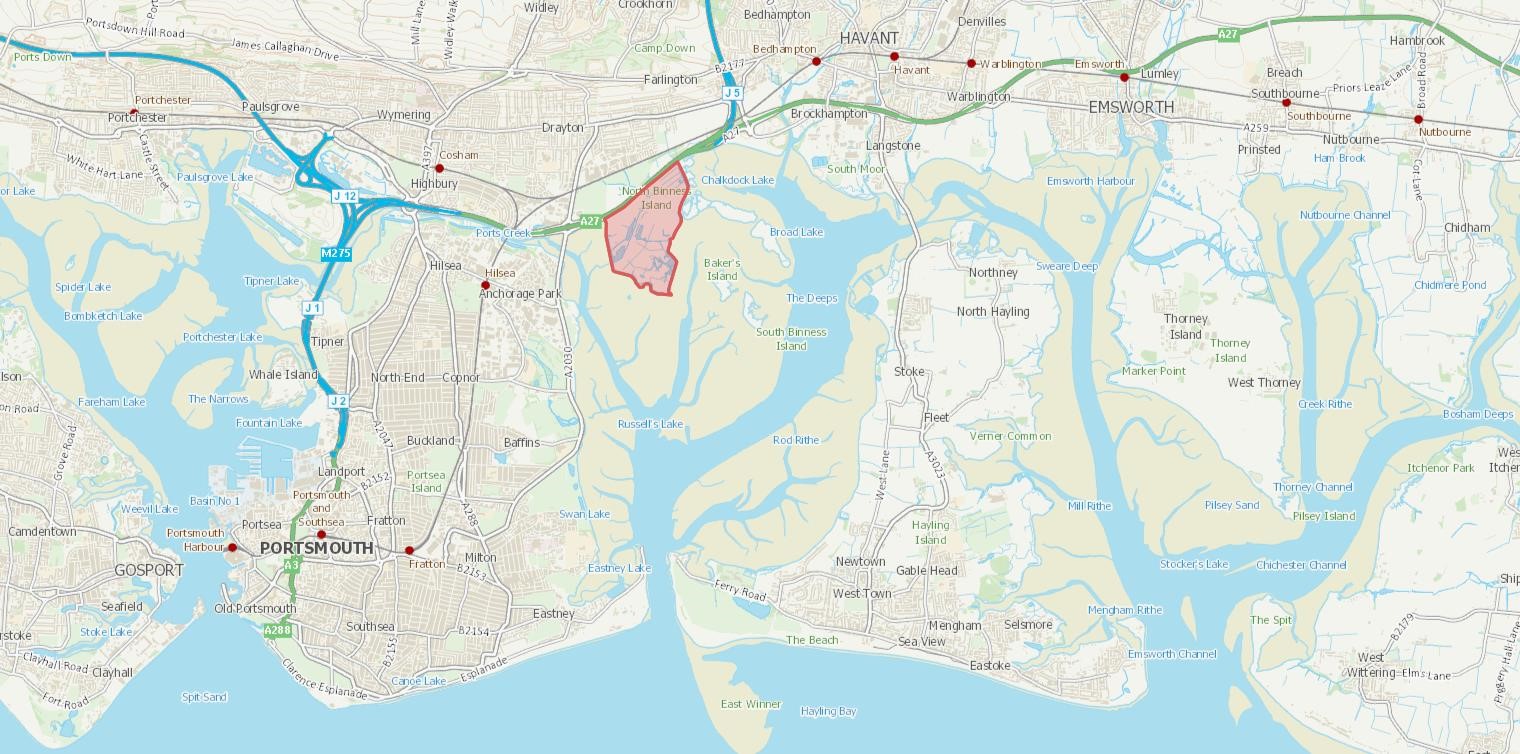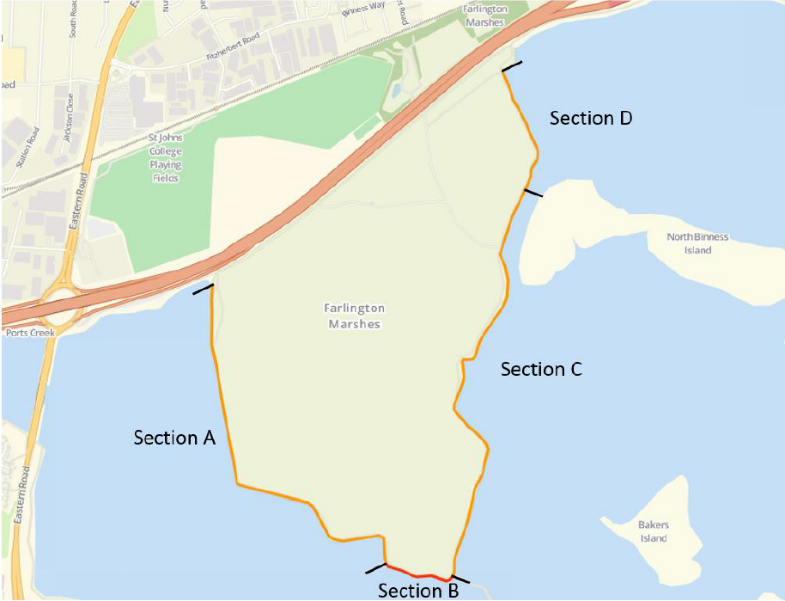Farlington Marshes Project information page
Overview
Welcome to the Farlington Marshes Project information page.
As the project progresses, we will provide updates through this information page and via our newsletter. To be added to the mailing list for the newsletter, please email us.
UPDATE: Farlington Survey Results (May 2024)
The Farlington Marshes Questionnaire responses have been collated and analysed. Over 3500 people took part over the three month period. It is clear from the many comments people contributed that the marshes are a loved and well used resource for enjoying nature and viewing wildlife. Here are some headline figures from the information we gained:
- Top Activities for visitors to do is watching birds and wildlife
- 68% of respondents live within 5 miles of the marshes
- Most p[popular method of getting to the marshes is by car
- 65% of visitors do so in the morning
- 42% of respondents wish for improvements in the facilities and amenities on the marshes
- 380 people feel Farlington Marshes should be left exactly how it is
Read the Response Analysis report for the full details (see link at bottom of page).
If you have any further questions or queries regarding the questionnaire, please do get in touch with the project team via FarlingtonMarshes@environment-agency.gov.uk.
Background
The Environment Agency is working in partnership with Portsmouth City Council to investigate options for a sustainable solution to flood risk management at Farlington Marshes.
Farlington Marshes is a 125ha area of undeveloped land situated on the south coast near Portsmouth and owned by Portsmouth City Council. It is one of Hampshire & Isle of Wight Wildlife Trust’s flagship nature reserves and is home to an array of important habitats and wildlife.
The marshes are currently defended by a sea wall approximately 3.5km long, which is also a popular public footpath. The Environment Agency currently maintains the sea defence and recent studies have found that parts of the defence are deteriorating. This, coupled with the challenge of rising sea levels due to climate change, creates an uncertain future for Farlington Marshes and finding a sustainable solution is the key objective of this project.

(Image above) Location of Farlington Marshes on the south coast of England
More Information
Farlington Marshes includes extremely important areas of lowland meadow, coastal grazing marsh and saline lagoon and is part of the wider estuarine system of Chichester and Langstone Harbours. Farlington Marshes represent a large proportion (around 125ha) of the remaining coastal grazing marsh found along the South Coast. Regionally and nationally this is a habitat of significant conservation concern.

(Above image) Wildlife found at Farlington Marshes, reference: HIW Wildlife Trust.
The marshes are internationally designated as a Special Protection Area (SPA), Special Area for Conservation (SAC) and Ramsar site for the habitats and species that it supports. It is also a Site of Special Scientific Interest (SSSI) and a Local Nature Reserve (LNR).
Farlington Marshes SPA is designated due to being one of the top sites in the country that supports the UK’s population of the Dark-bellied brent goose (Branta bernicla) - it ranks 3rd in the South for overall Dark-bellied brent goose numbers. It is also an exceptionally important habitat for breeding birds such as Redshank and Lapwing, species that are under threat nationally, and provides important feeding and roosting grounds for a number of coastal bird species.
Under the Conservation of Habitats and Species Regulations, there is a legal requirement for public bodies to maintain the features for which nature conservation sites are internationally designated. A key objective of the project will be to make sure that any option for Farlington Marshes does not negatively impact on the designated sites and species using the site.
Amenity Value
Farlington Marshes is located in one of the most highly populated areas of the South Coast. A lack of available green space and poor air quality are among the major challenges faced by local communities. The Marshes provide opportunities for walking, running and bird watching and are easily accessible by bicycle. It is a strategic open space and one of Portsmouth's only two Natural Green Spaces over 100ha.
The Solent Way long distance footpath route currently runs along the sea wall, as will the forthcoming England Coast Path. National Cycle Network Route 22 passes the northern boundary of the marshes.
Farlington Marshes attracts approximately 100k visitors per year and The Outdoor Recreational Valuation Tool (University of Exeter) estimates that Farlington Marshes has a welfare value of £700k per year. A key objective of the project will be to make sure that the option chosen maintains the current amenity value of the site and look at opportunities to enhance this.
History
Originally protected from the sea to secure land for grazing in 1771, Farlington Marshes has seen a wide variety of uses in its history. For instance the marshes saw significant use during the wars as a decoy site and as a munitions dump. The past use of Farlington Marshes and the impact on any buried artefacts will be considered carefully when developing options.

(Image above) Lidar image of Farlington Marshes revealing evidence of historic works
More Information
Farlington marshes is protected by a 3.5km long coastal defence, which takes the form of an embankment with an armoured exposed face. The defence is split into four sections which represent a change in construction and material type. The defence sections are defined as follows:
• Section A: An embankment with concrete exposed face, natural crest and vegetated landward face.
• Section B: An embankment with concrete exposed face, concrete and sheet pile toe protection, concrete parapet wall, natural crest and vegetated landward face.
• Section C: An embankment with a concrete and gabion cage exposed face, natural crest and vegetated landward face.
• Section D: A natural vegetated embankment with gabions and informal rock armour protection on the exposed face.
The sea wall is in a poor condition and sections have been assessed as having a limited useful remaining life span. A significant breach of the sea wall could result in inundation of the Marshes and its terrestrial, freshwater and saline lagoon habitats, resulting in damage to and loss of the designated interest features of the site with subsequent knock-on impacts to important species and habitats in the wider Natural Sites Network.
Although there are low-lying homes within the wider coastal floodplain of which Farlington Marshes are a part, the existing sea wall does not directly provide protection to these.

(Image above) Condition survey sections

(Image above) Example of damage to existing revetment, 2019
More Information
Since spring 2019, engagement with key stakeholders including Portsmouth City Council, Natural England, Coastal Partners and the Hampshire and Isle of Wight Wildlife Trust has resulted in broad agreement that a Hold the Line (keep the current defence) strategy is the preferred management strategy for Farlington Marshes, at least until 2060. This is primarily due to the strategic importance of the site for its nature conservation interest and for public green space.
However it is accepted that, due to sea level rise projections, sea defence raising is not a permanent solution for the protection of habitats at this site and that therefore an opportunity exists under this scheme to start planning for transition to a more sustainable solution
Option selection for a solution at Farlington Marshes has focused on embodied and operational carbon dioxide emissions, with the aim of providing a solution that approximates net zero over its design life. When considering the net effect on greenhouse gas emissions of options, we are also considering the Marshes in their current state as a carbon sink.
Ground investigations were undertaken in 2022 and throughout 2023 we have been undertaking environmental surveys and modelling of the impact of different flood events as well as further research to help to inform the possible designs for improving the sea defence at Farlington Marshes.
In early 2024 we will be seeking planning permission from the local council to carry out our preffered option. Work is proposed to refurbish and strengthen the existing wall in order to safeguard the designated site and its ecological functions along with its current recreational and amenity value.
This project aligns with Defra and Environment Agency policy on flood risk management as set out in the National Flood and Coastal Erosion Risk Management Strategy for England (2011), in particular in the strategy’s reference to the powers provided in the Flood and Water Management Act (2010) to manage flooding or coastal erosion in the interests of nature conservation.
More Information
Be prepared for flooding
Please continue to be prepared and resilient towards flooding by signing up to receive advanced warnings of flooding. Register by calling Floodline 0345 988 1188, or visiting www.gov.uk/sign-up-for-flood-warnings . If you are already registered to the Floodline Warning Service, again please check if your details need updating by visiting www.fws.environment-agency.gov.uk/app/olr/login
Contact us
By email: FarlingtonMarshes@environment-agency.gov.uk
By phone: 03708 506506 and ask to speak to a member of the Farlington Marshes Project team
By post: Farlington Marshes Project, Environment Agency, Chichester Office, Oving Road, Chichester, PO20 2AG.
Audiences
- Businesses
- Charities
- Statutory organisations
- NGOs
- Members of the public
- Elected representatives, including MPs
- Local councils
- Academics
- All water abstractors
- Environment Agency customers
- Environment Agency colleagues
- Lead Local Flood Authorities
- Local Risk Management Authorities
- Flood Resilience Forums
- Members of the public
- Town and parish councils
- Regional Flood and Coastal Committees
Interests
- Flood management
- Coastal management
- Habitats and wildlife
- Specific projects, issues, or activity pages

Share
Share on Twitter Share on Facebook